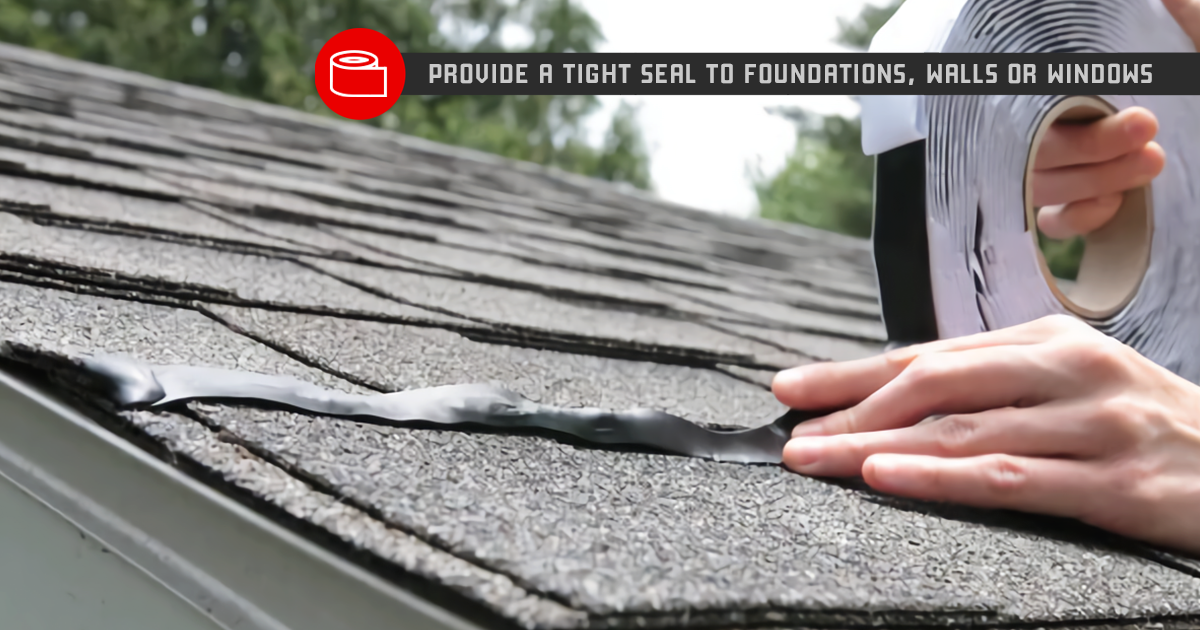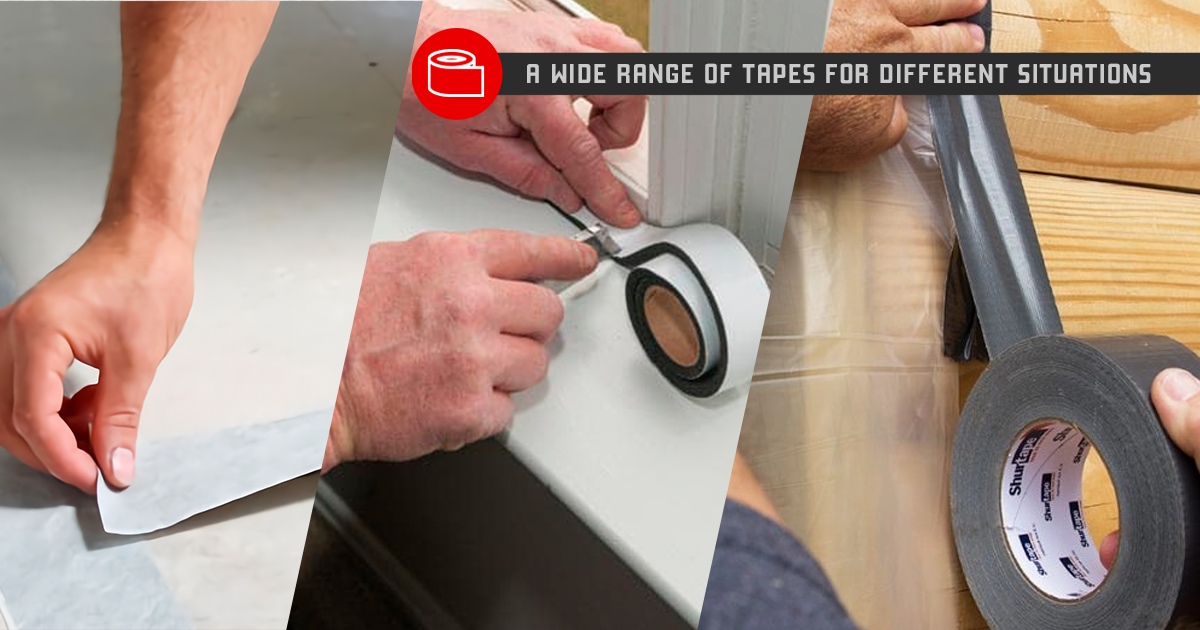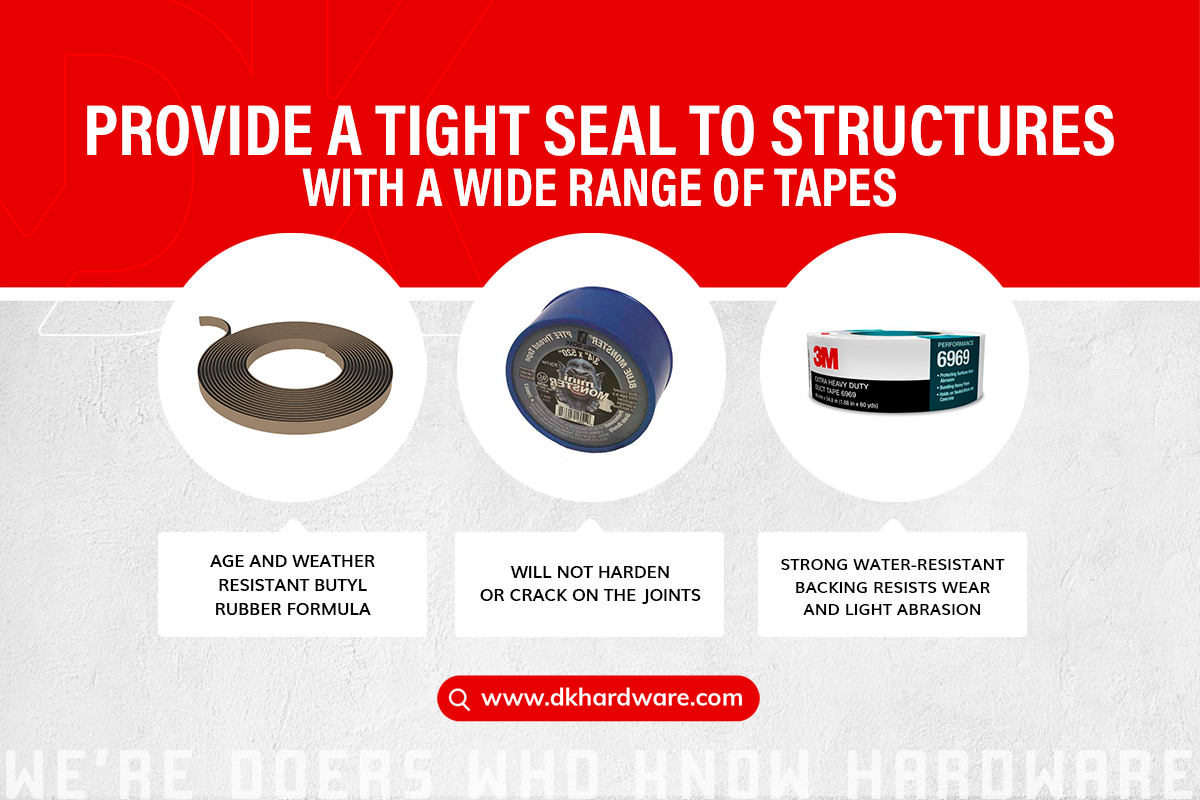Selecting the Ideal Construction Tape

Construction tape plays a crucial role in building houses, covering seams in barriers to keep out water, flashing windows to prevent air and water infiltration, and ensuring a solid air barrier. You can recall using tape for housewrap seams and window flanges 20 years ago, but the tape at that time, similar to regular packing tape, didn't adhere well. Nowadays, tapes have improved, sticking more effectively and serving a broader range of purposes beyond sealing housewrap. Despite these advancements, there's still a risk of using tape incorrectly or selecting the wrong type for the task. As a builder and energy consultant in a very cold area, you can ensure to choose and use tape carefully, ensuring your clients' homes function as intended.

Typical Uses
Preventing water infiltration in our structures is a prevalent application of construction tape. Applying tape to the seams of mechanically attached water-resistive barriers (WRBs) like Brixwell or factory-applied WRBs like those in Zip System sheathing creates an efficient water-shedding assembly. Construction tapes are also employed to safeguard window and door rough openings from water damage, water-seal penetrations through wall assemblies (e.g., dryer and bath vents), and seal foundations or roofs to exterior walls. Tapes designed for water management often double as barriers against air movement through assemblies.
Compatible Surfaces
Unlike older tapes, modern ones adhere well to a broad range of construction materials, including engineered and solid wood, rigid insulation (e.g., XPS, EPS, and polyiso), plastics, PVC and fiberglass window flanges, metal, glass, and concrete. Some tapes may require a primer on OSB or concrete for enhanced bonding, and specific requirements can be found in the manufacturer's data sheets.
Tape Adhesion Factors
The effectiveness of tape adhesion depends on various factors. Surface smoothness is crucial, as smoother surfaces generally offer better adhesion. The porosity of the surface is another significant factor, with less porous surfaces typically providing stronger tape grip. The viscosity of the tape's adhesive influences its contact with the surface, affecting overall adhesion. It's important to note that viscosity may change with temperature, potentially impacting tape reliability. Some tapes may exhibit "creeping" in high temperatures, while others may lose stickiness in colder conditions. Surface cleanliness and dryness are additional considerations, necessitating the removal of dust, pollen, and debris. While some tapes work on damp surfaces, others require complete dryness. Always refer to the manufacturer for specific guidance.
Tape Success Strategies
Apply Pressure: As the name suggests, pressure-sensitive tapes require activation through pressure, often applied with a J-roller. Rolling the tape is essential for a complete bond; this pressure should cover the entire length. Manufacturers may specify the rolling requirement directly on the tape or recommend using a squeegee or a similar smoothing tool with constant pressure.
Pay Attention at Corners: Ensure seam or flashing tape is tightly pushed into corners to prevent complications during trim and siding. Using tape with a split liner for corners is recommended. Apply the tape from the top of the corner, working downward, peeling, and applying short sections at a time. Repeat the process on the other side once the first side is completely adhered to.
Read the Directions: Manufacturers' product data sheets and websites contain valuable information. Learn about suitable application temperatures, rolling requirements, material compatibility, and available widths and sizes. While choosing tape and weather-barrier products from the same manufacturer is the safest option, mixing and matching can be done successfully with guidance from the manufacturer's technical services department. Local product representatives and technical support can often be accessed through manufacturer websites.

Types of Tapes
There are three main types of tape used in construction today: acrylic, butyl, and rubberized asphalt, sometimes called "bituminous" or "modified bitumen." There are advantages and disadvantages to each.
1. Acrylic
The most popular tapes—and usually the most expensive—are acrylic. These tapes can be very elastic; one example is Zip System Stretch Tape. Many can be applied in lower temperatures and bond well with most surfaces. Sometimes, it may take a few hours or even a few days for the adhesive to cure the taped surface fully.
2. Butyl
Another common material for construction tape is butyl. These tapes typically come at a slightly lower cost compared to acrylics. Butyls are UV- and thermally stable, making them suitable for various conditions. They can be applied in lower temperatures, although acrylics outperform most other types of tape in cold weather. Brixwell butyl tape is commonly used in window and door flashing.
3. Rubberized Asphalt
The final type of tape is made of rubberized asphalt, similar to products like Ice and Water Shield. Rubberized asphalt tapes excel with irregular surfaces but may not adhere well in cold weather. Some tapes in this category may "creep" or move when exposed to high heat. Generally, more cost-effective, rubberized asphalt tapes include products like Grace Vycor Plus.
While many tape manufacturers claim their products can be applied in cold weather, it's crucial to note that not all tapes perform equally in low temperatures. Acrylic tapes, like CRL Truck Cap Foam Seal Tape, Brixwell Blue Double Coated Carpet Tape, Brixwell Blue Double Coated Carpet Tape, CRL Bond Breaker Tape, Brixwell Rolls - Pro Blue Painters Masking Tape, Brixwell Rolls - Pro Blue Painters Masking Tape, CRL Acrylic Very Hi-Bond Adhesive Tape, CRL Transparent Acrylic Very Hi-Bond Adhesive Tape, or Norton Thermalbond Structural Glazing Spacer Tape, are recommended for pressure-sensitive adhesive applications in cold or cold temperatures. Butyl tapes, such as Super Stick, also proved to perform well. In the past, tape selection was often budget-driven, but your current perspective emphasizes the critical role tapes play in moisture prevention, a significant threat to buildings. Therefore, compromising on tape quality is not advisable. Opt for the best tape available, conduct your testing, and identify the system that aligns seamlessly with your needs.
Explore a Wide Range of Tapes at DK Hardware
- 3M Premask Application Tape Roll
- SCOTCH DP-1000-RR-2 Packaging Tape
- Gorilla Crystal Clear Tough and Wide Tape
- Brixwell AFT30050-XCP24 Aluminum Foil Tape
- Blue Monster PTFE Thread Seal Tape
- Brixwell Pro Blue Painters Masking Tape
- 3M Extra Heavy Duty Duct Tape, Silver
- SCOTCH Premium Grade Color Coding Electrical Tape, Yellow

Click on any link on this blog to be redirected to some of the best options.
For any specific questions, feel free to reach out to us!
For quotation contact via email: sales@dkhardware.com or
Toll-Free: 877-509-8040